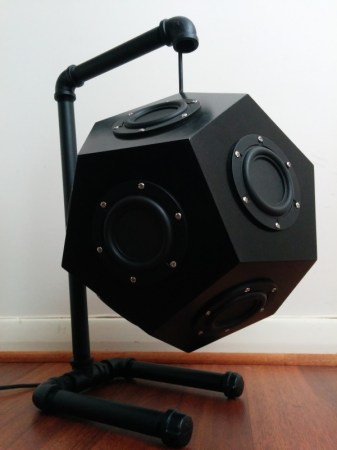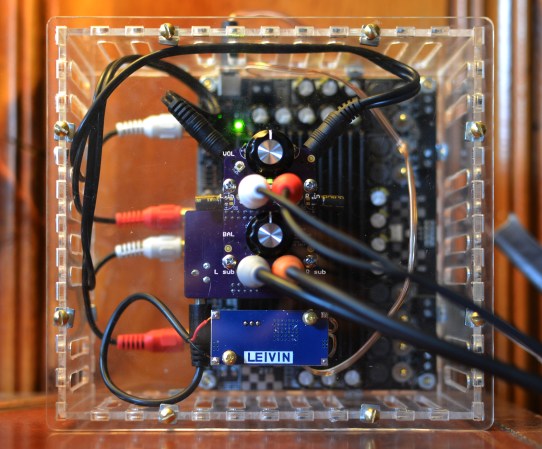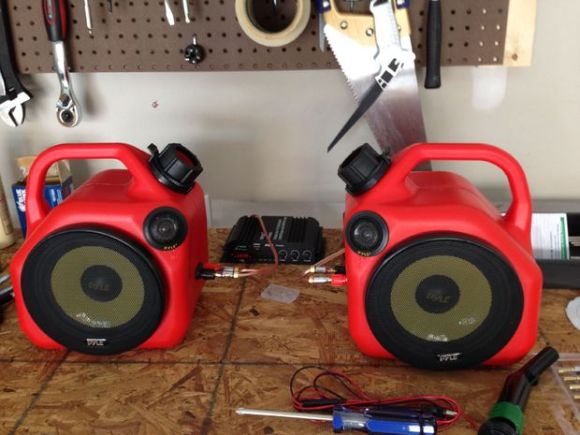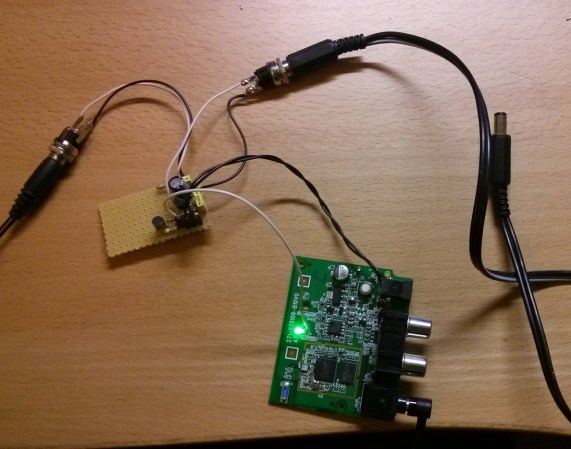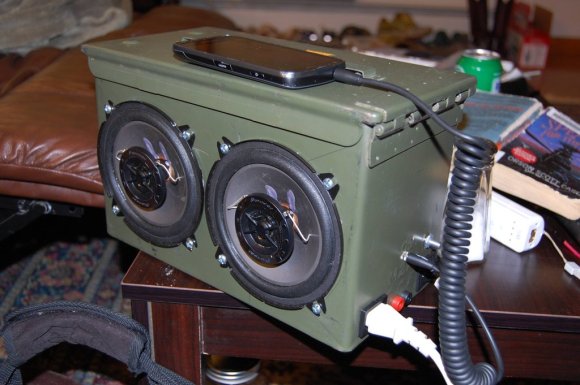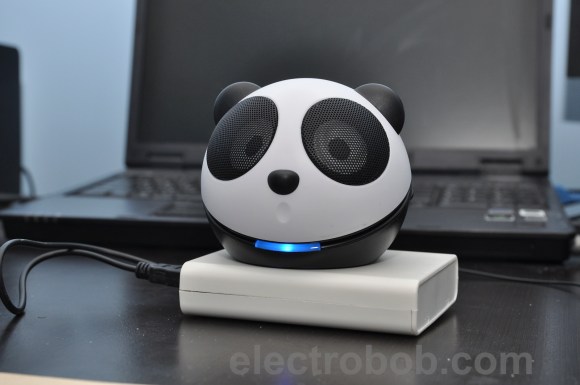While studying acoustics in college (university for non-Americans), [Nick] had a great idea for an omnidirectional speaker. Some models available for purchase have a single speaker with a channel to route the sound in all directions, but [Nick] decided that a dodecahedron enclosure with 12 speakers would be a much more impressive route.
To accommodate the array of speakers, the enclosure needs twelve pentagons with a 58.3 degree bevel so that they fit together in a ball shape. After thinking about all of the complicated ways he could get this angle cut into the wood pentagons, he ended up using a simple circular saw!
Once the enclosure was painted [Nick] started wiring up the speakers. The equivalent impedance of the array of 8-ohm speakers works out to just around 10 ohms, which is easily driven by most amplifiers. The whole thing was hung from a custom-made galvanized pipe (all the weight adds up to about 15 kilograms, or 33 pounds for Americans, so the rig needed to be sturdy). We’ve featured other unique speaker builds, but this is the first 12-speaker omnidirectional speaker we’ve seen. [Nick] is happy to report that the speakers sound great, too!

